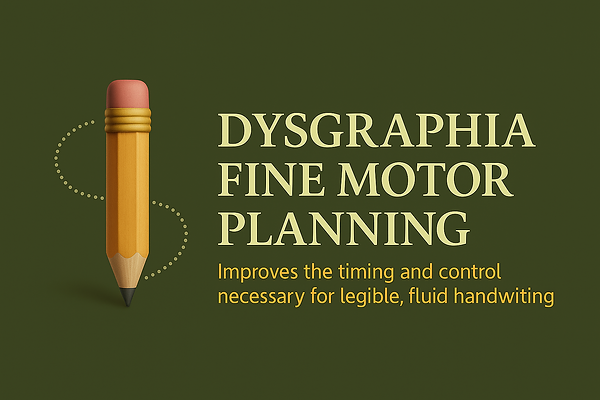
Dysgraphia & Fine Motor Planning
Helping the Brain Write with Rhythm, Timing & Control
At Precision Brain Training™, we help children and teens struggling with dysgraphia, poor handwriting, and fine motor delays build confidence and coordination from the inside out. Using Interactive Metronome® (IM), we train the brain to better organize movement, attention, and timing—key ingredients for clear, legible, and efficient writing.
What is Dysgraphia?
Dysgraphia is a neurological handwriting disorder that affects the ability to:
-
Form letters and maintain spacing
-
Coordinate hand movement with visual input
-
Sequence strokes and maintain rhythm while writing
-
Sustain focus and posture during writing tasks
Many children with dysgraphia also have challenges with fine motor planning, grip strength, pencil control, or motor fatigue—all of which IM is designed to support.
How Interactive Metronome Helps
IM targets the brain’s timing and coordination networks, which directly impact writing fluency and motor sequencing. Through fun, structured rhythmic exercises, IM strengthens:
✔️ Fine motor precision for smoother letter formation
✔️ Visual-motor integration to help eyes and hands work together
✔️ Hand-eye coordination for improved control and spacing
✔️ Gross motor coordination, which supports posture, shoulder stability, and core engagement
✔️ Attention and focus, helping students complete writing tasks with less fatigue
The Brain Behind the Pencil
Brain RegionFunctionIM Impact
CerebellumTiming, rhythm, and motor learningEnhances smooth, controlled movement
Parietal LobesSensory-motor integrationSupports accurate pressure and direction
Prefrontal CortexPlanning and attentionBoosts writing endurance and focus
Motor CortexFine and gross motor controlImproves both small hand movement and large posture alignment
What Families Notice
-
Neater, more fluid handwriting
-
Improved speed and endurance
-
Less frustration with writing tasks
-
Better ability to copy from the board
-
Improved core stability and posture during work
-
More confidence in schoolwork and independent tasks
Ideal for Children with:
-
Dysgraphia
-
ADHD with fine/gross motor delays
-
Sensory processing difficulties
-
Developmental coordination disorder (DCD)
-
Visual-motor integration challenges
-
Autism Spectrum with handwriting struggles
Let’s Train the Brain to Write
By building timing, rhythm, and whole-body coordination, Interactive Metronome helps students gain the motor readiness they need to succeed.